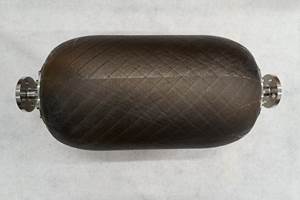Editorial - 6/1/2005
Home from JEC/SAMPE Europe: Show managers claimed over 25,000 attendees — the largest ever. Nearly everyone I spoke to was upbeat about their market sector. Even uncertainty in international markets and the volatile price of oil didn't seem to dampen spirits. For example, manufacturers for the automotive market,
Home from JEC/SAMPE Europe: Show managers claimed over 25,000 attendees — the largest ever. Nearly everyone I spoke to was upbeat about their market sector. Even uncertainty in international markets and the volatile price of oil didn't seem to dampen spirits. For example, manufacturers for the automotive market, which we all know is a tad tight right now, are expecting composite materials to gain market share because of high gas prices and the escalating costs of steel and aluminum.
Resin manufacturers are managing to get much needed price increases, although their raw material supplies are still almost desperately short and will remain so for the near future. U.S. and European glass producers are running on slim margins as a result of increased competition from lower cost Asian glass. There is a notable effort on the part of established glass producers to concentrate on higher value end markets and add value to their product forms to stay ahead of the game. These product improvement efforts, while expensive, will be good for the industry in the longer run, making composite materials less costly and easier to use!
We, of course, also attended SAMPE 2005, here in the U.S. The show attracted just under 4,200 industry professionals and more than 200 exhibitors, with 280 presented papers. This show is a huge and exemplary effort from a society that asks its volunteer chapters to do most of the work in getting their technical conference together. While attendance numbers are not as large as JEC, I can attest to the fact that the enthusiasm level at this conference was the highest in years, especially with all the current activity in the aerospace sector.
At both shows, material suppliers and part manufacturers told us they expect composites to outperform other industrial materials sectors by a point or two in growth, with industrial applications leading the way.
This week, we had a booth at the American Wind Energy Assn.'s (AWEA) annual conference, which (thankfully) was held here in Denver. Although composites per se were not the focus of the conference, the industry is a huge growth market for composite materials, and all of the big wind turbine blade manufacturers were there in spades. By the end of 2005, there will be 50,000 MW of wind-generated electrical capacity worldwide. Growth is expected to add (conservatively) another 50,000 MW of installed capacity by 2009. Since blade manufacturers use about 20,000 lb of composite materials per MW, more than 1 billion lb of composite materials will be used. At roughly 50 percent fiber loading, by weight, that's 500 million lb each of fiber and resin. I'm impressed. Our upcoming Composites in Alternative Energy Guide will examine in detail the huge potential for composites in the wind energy market (not only in the manufacture of blades, but turbine nacelles, rotor hubs and driveshafts, and the towers, too) — not to mention the market for fuel cells, hydrogen and CNG storage tanks and even turbines that will harvest electrical energy from ocean tides! By the way, you fiber and resin producers — there's still time to become Guide sponsors and take leading roles as suppliers to alternative energy manufacturers.
Have a great summer!
Related Content
MingYang reveals 18-MW offshore wind turbine model with 140-meter-long blades
The Chinese wind turbine manufacturer surpasses its 16-MW platform, optimizes wind farm construction costs for 1-GW wind farms.
Read MoreInfinite Composites: Type V tanks for space, hydrogen, automotive and more
After a decade of proving its linerless, weight-saving composite tanks with NASA and more than 30 aerospace companies, this CryoSphere pioneer is scaling for growth in commercial space and sustainable transportation on Earth.
Read MoreHonda begins production of 2025 CR-V e:FCEV with Type 4 hydrogen tanks in U.S.
Model includes new technologies produced at Performance Manufacturing Center (PMC) in Marysville, Ohio, which is part of Honda hydrogen business strategy that includes Class 8 trucks.
Read MoreNCC reaches milestone in composite cryogenic hydrogen program
The National Composites Centre is testing composite cryogenic storage tank demonstrators with increasing complexity, to support U.K. transition to the hydrogen economy.
Read MoreRead Next
“Structured air” TPS safeguards composite structures
Powered by an 85% air/15% pure polyimide aerogel, Blueshift’s novel material system protects structures during transient thermal events from -200°C to beyond 2400°C for rockets, battery boxes and more.
Read MoreVIDEO: High-volume processing for fiberglass components
Cannon Ergos, a company specializing in high-ton presses and equipment for composites fabrication and plastics processing, displayed automotive and industrial components at CAMX 2024.
Read MoreAll-recycled, needle-punched nonwoven CFRP slashes carbon footprint of Formula 2 seat
Dallara and Tenowo collaborate to produce a race-ready Formula 2 seat using recycled carbon fiber, reducing CO2 emissions by 97.5% compared to virgin materials.
Read More







.jpg;maxWidth=300;quality=90)













